Police Cracks Down On Protest Against Iran’s Compulsory Military Service
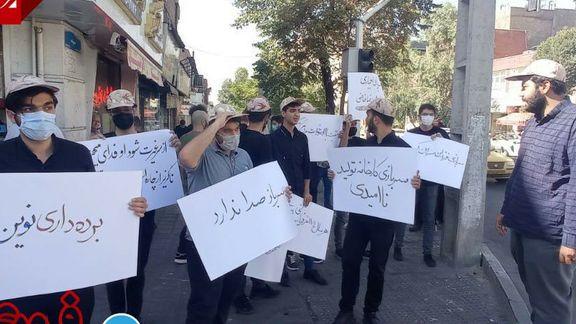
At least one person was arrested on Saturday after security forces attacked protesters to disrupt a gathering against the Islamic Republic’s compulsory military service.

At least one person was arrested on Saturday after security forces attacked protesters to disrupt a gathering against the Islamic Republic’s compulsory military service.
A group of university students held the demonstration in front of Iran’s Public Conscription Organization in downtown Tehran.
They were holding placards bearing slogans against the mandatory service such as "Modern Slavery," "Conscripts have no voice," "Military service: a factory for manufacturing frustration," and "Two years of forced imprisonment.”
Mohammad Eskandari, the secretary of the so-called Student Justice Movement – the NGO which had organized the gathering – was arrested during the crackdown.
Many people are critical of the compulsory nature of the service and its physical and psychological pressures on the conscripts, which in some cases lead to suicide or violent acts.
In March, a young military conscript embarked on a killing spree in one of the barracks in the southern province of Bushehr, killing four of his fellow servicemen after his request for leave was denied.
Earlier in the year, Iran canceled the buy-out scheme for compulsory military service, just one day after it was reported following widespread criticism by citizens and officials. Only wealthy families could afford to buy out their sons military service.
According to Iran’s constitution, all men over 18 years old must serve in the military for about two years, otherwise they cannot apply for a passport to leave the country. Most are drafted into the traditional Army, but some with the right connections serve with the Revolutionary Guard where conditions are much better.
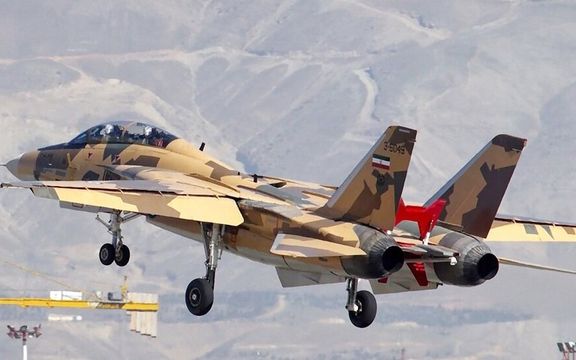
Fars news agency affiliated with Iran’s Revolutionary Guard has showcased an American article about how well Iranian pilots used the F-14 Tomcat fighters.
The article published by a US-based website 19FortyFive re-told the story that the first air-to-air kill by an F-14 was not accomplished by American pilots, but by an Iranian on September 7, 1980, one day after the long Iran-Iraq war began that lasted eight years.
Fars tells its readers that an American website has given credit to pilots of the Islamic Republic for the first air-to-air F-14 victory, one year before US pilots shot down Libyan planes in a punitive engagement. Fars said that the American publication recognized the unique abilities of Iranian pilots with the heavy American fighter designed to face Soviet bombers at long distances.
What Fars does not say is that these fighter pilots who engaged the Iraqi air force one year after the 1979 revolution and the establishment of the Islamic Republic were in fact officers recruited by the Imperial air force during the monarchy and trained by the US Air Force.
It also does not mention how Iran’s last king, Mohammad Reza Shah had been able to get 70 Grumman F-14 Tomcats, a fourth-generation sophisticated fighter, in the 1970s from the United States. In fact, it was President Richard Nixon who approved the sale to one of the most trusted US allies outside NATO at a time when the United States was losing the war in Vietnam and the power and influence of the Soviet Union was on ascendancy.

The Shah’s son, Reza Pahlavi was also sent to the United States to be trained on the F-14 right before revolution broke out. He currently lives near Washington DC and is an influential political figure for many Iranians opposed to the Islamic Republic.
“On September 7, 1980, five Mil Mi-25 (export model of the Soviet Mi-24) attack helicopters in Iraq’s Army Air Corps penetrated Iranian airspace and attacked a few border posts. In response, two F-14 Tomcat pilots intervened in an attempt to take out the aircraft,” the article in 19FortyFive says.
Citing another source, The Aviation Geek, the article explains that the Tomcat pilot failed to hit the MI-25 helicopters with his AIM9P Sidewinder missiles, but “Selecting ‘GUN’ on his control column, he put the gunsight pipper over the rearmost Mi-25 and opened fire. The aircraft’s M61A1 Vulcan gun gull spewed out 400 rounds. Many found their mark and the Iraqi attack helicopter exploded in a brilliant ball of fire.”
There are still around 40 F-14s in the Islamic Republic’s air force that have been somehow maintained, although periodically some have crashed. One Tomcat crashed in June and another in 2019. Some have been used for parts to maintain the others, since the United States severed relations with Iran in 1980 and imposed sanctions on export of US technology to the country.
Iran has also tried to build parts for the Tomcats and adapt homegrown Russian-model air-to-air missiles, but it there is no independent confirmation of their effectiveness.
Still, after nearly 50 years, the F-14 Tomcats are an important part of Iran’s air force, which has a hodgepodge of old Russian, Chinese and even French warplanes that Iraq sent to Iran faced with an imminent US attack.
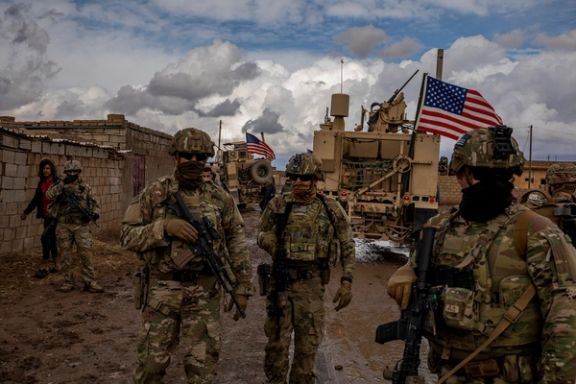
Following a series of US strikes on Iranian militia in Syria, reports say Washington has told Tehran through various channels that it does not seek to heighten tensions in Syria.
An article by the New York Times quoted a US official as saying that the Americans made clear to Iran, through private channels as well as publicly, that they were not trying to escalate hostilities but only sought to protect US interests.
US President Joe Biden told Congress on Thursday, August 25, that he ordered the strikes on the Iran-backed militia “to degrade and disrupt” attacks on US forces.
On Friday, Iran’s foreign ministry spokesman Nasser Kanaani rejected Biden’s argument that the US is responding to threats against American forces. Knaani on Wednesday had denied any links between Iran and the militia forces in Syria.
Militias backed by Iran’s Revolutionary Guards attacked a US military base in southern Syria with drones on August 15 and on the same day, a different base used by the US-led coalition near Syria’s eastern border with Iraq came under rocket fire, triggering a string of tit-for-tat attacks this week, including airstrikes on three consecutive nights against Iran-linked targets.
Senior US officials said the August 15 attacks on the two US bases in Syria could have been an Iranian attempt to avenge a previous Israeli attack, as the attack on US base at al-Tanf -- near the border in southern Syria -- came a day after Israel struck bases in the Syrian provinces of Damascus and Tartus, where Iran-backed fighters are often stationed.
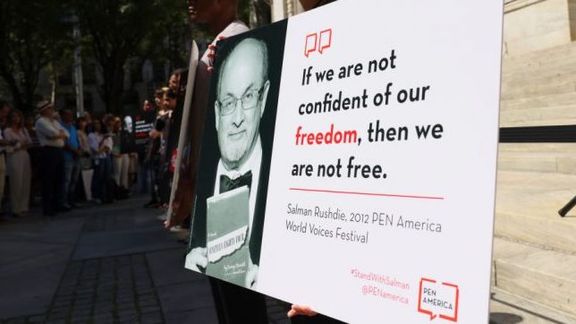
Controversial remarks by a University of Denver professor who blamed Israel's Mossad for the attack on author Salman Rushdie has prompted Republicans to probe pro-Iran propaganda in US colleges.
Lawmakers associated with the Republican Study Committee (RSC), the largest Republican caucus in Congress, are set to launch oversight investigations into schools like the University of Denver to root out "anti-Semitic and anti-American conspiracy theories."
Indiana representative Jim Banks, the RSC's chairman and a member of the House Armed Services Committee, told the Free Beacon that "Anti-Semitic and anti-American conspiracy theories are now widespread in universities and poisoning students' minds," stressing the need for oversight on professors promoting the Iranian regime's anti-Semitic propaganda and reforming the higher education.
His remarks came after Nader Hashemi, the director of the Denver University’s Center for Middle East Studies, said this week during a podcast that Rushdie’s alleged attacker, Hadi Matar, could have been persuaded to carry out the attack by Mossad agents posing as members of Iran’s Revolutionary Guards, which reportedly were in contact with Matar prior to the near-fatal stabbing.
He said a "much more likely" scenario for the attack revolves around Matar’s supposed communications "with someone online who claimed to be an Islamic Revolutionary Guard Corps (IRGC) supporter and lured him into attacking Salman Rushdie. And that so-called person online…could have been a Mossad operative."
Representative Greg Steube from Florida, a member of the RSC and the House Foreign Affairs Committee, described Hashemi’s remarks as untrue and especially dangerous to pro-Israel students on campus, saying, "Propaganda from the Iranian regime has no place on American college campuses."
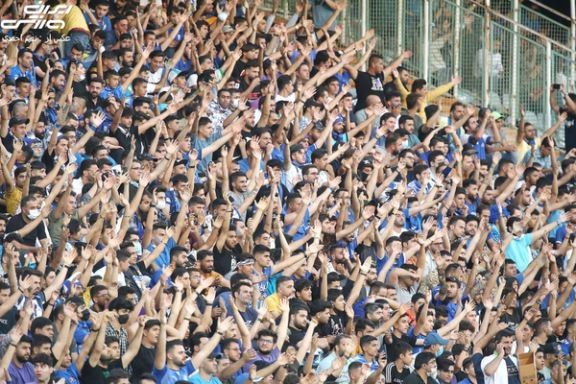
Spectators of a football match in Tehran’s Azadi stadium booed while a choir was performing ‘Hello Commander’, a pop genre religious and ideological propaganda song.
Videos circulating on social media showed people booing a performance of the heavily-promoted song at the stadium before a match of Iran’s premier league on Friday.
The football fans also chanted the name of Voria Ghafouri, a popular former captain of Esteghlal football club who was fired from his team for criticizing the government. Ghafouri’s criticism of government’s regional policies and downplaying the impact of US sanctions on ordinary Iranians, had met with an angry response from Supreme Leader Ali Khamenei.
State organizations and the ministry of education have been promoting ‘Hello Commander’ in schools and during numerous cultural and sport events since it was broadcast from state television for the first time this year after Khamenei’s speech for the Iranian New Year on March 20.
‘Hello Commander’ is a song dedicated to Mahdi, the 12th Imam, who Shiite believers say has been in occultation since the 9th century. The song and its promotion are unusual as the its pop genre has no place on Iran’s state media.
Many social media users have seen the song as propaganda for Khamenei as the “hidden Imam’s representative on earth”, and commander-in-chief of Iran’s Armed Forces. Some draw a parallel between him and Hitler by sharing a video of Nazi Youth gatherings with the original audio replaced with ‘Hello Commander’.
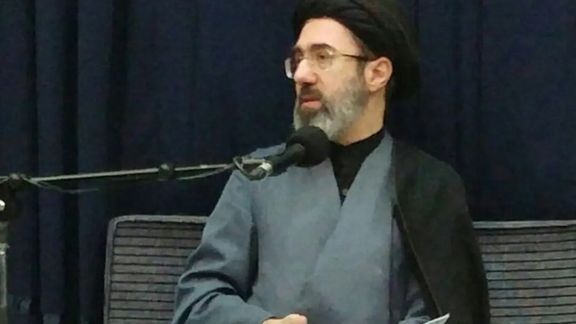
An Iranian news agency’s use of the title “Ayatollah” for Mojtaba Khamenei has rekindled suspicions that he's being groomed to succeed his father as Supreme Leader.
Social media users have widely interpreted Rasa News Agency’s attempt to promote the supreme leader's son as an ayatollah as confirmation that he's being groomed for leadership. The Supreme Leader being also the highest religious authority must be at least recognized as an ayatollah by Grand Ayatollahs.
The news agency used the title in an announcement for registration of Mojtaba Khamenei’s theology course, (kharej fiqh), at Qom seminary where he has been studying and teaching for a few years now.
Kharej fiqh is the highest level of Shia seminaries and ayatollah is an honorific title for high-ranking Twelver Shia clergy. Unlike academic titles that one gains automatically after completion of a degree, Shia scholars are usually confirmed as ayatollahs only when their teachers, and peers, address them as such.
The 53-year-old Mojtaba Khamenei, the second eldest of Khamenei’s four sons, has until now only been recognized as a hojjat ol-eslam, a much lower rank in the Shiite clerical hierarchy.
Rasa, established in 2003 andknown as the news agency of Qom seminaries,is in the city of Qom where most Iranian Shiite seminaries are located. Rasa Publishers in Persian, English, Arabic, and Urdu.
The news agency calls itself a private media outlet established by seminary scholars and researchers but some Iranian media affiliated with reformists such as the Jamaran news website have claimed that Rasa is funded and run bythe IRGC and criticized it for “meddling in politics”.
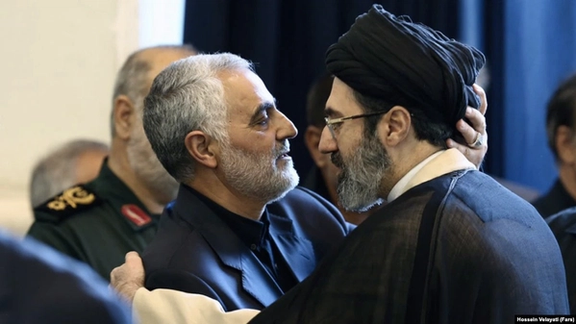
Earlier in August, Mir Hossein Mousavi who has been under house arrest since February 2011, warned the nation over the introduction of hereditary leadership, referring to Khamenei’s son Mojtaba. Mousavi’s warning revived rumors about Mojtaba’s activities and his alleged ambition to succeed his father.
Hardliners have fiercely attacked Mousavi, Iran’s Prime Minister from 1981 to 1989, for implicitly taking a shot at Khamenei.
Rumors about Mojtaba Khamenei’s ambitions have been circulating in Iran since 2005 when he was first accused of rigging the presidential election in a bid to bring like-minded politicians to power.
Mousavi who served as the Islamic Republic's first prime minister from October 1981 to August 1989, under then President Ali Khamenei, was put under house arrest nearly two years after the disputed 2009 presidential elections, when the incumbent Mahmoud Ahmadinejad was announced the winner in suspicious circumstances at Mousavi’s expense.
During the protests that followed, protesters often chanted against Mojtaba Khamenei who they held responsible for meddling with the election result, bringing Ahmadinejad to power and the crackdown on protesters. “Die, Mojtaba, may you never achieve leadership,” they chanted.
During the past years there have also been rumors about Mojtaba’s involvement in financial corruption cases involving the IRGC. The rumors also charged that he supervised the IRGC Intelligence when Hossein Ta’eb, who was recently fired by Khamenei, headed the organization.
Mojtaba Khamenei is an enigmatic figure who holds no public office in the government and is rarely seen in public but reportedly wields much more influence than the leader’s other sons in powerful organizations such as his father’s office and the IRGC Intelligence Organization (SAS).
Mojtaba Khamenei also has great influence in the country’s propaganda machine including the state-broadcaster (IRIB), and behind-the-scenes political dealings.